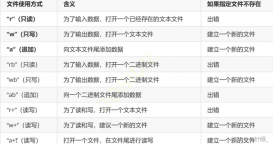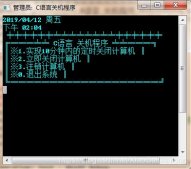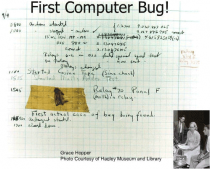本文是一篇译文,主要以实例形式讲述了C++中DeviceIoCteatol的用法。分享给大家供大家参考。具体方法如下:
应用程序代码如下:
BYTE bytBuffer_1[512];
BYTE bytBuffer_2[512];
CHAR string[2048];
HANDLE hDevice, hDriver;
BOOL bRet;
bRet = DeviceIoControl(hDriver, IOCTL_WRITE, (LPVOID)bytBuffer_1, 512,
NULL, 0, &dwBytesReturned, NULL);
if(bRet == FALSE)
{
printf("\nFailed - DeviceIoControl - IOCTL_WRITE.\n");
return 0;
}
printf("\nWrite MBR using I/O port operations...\n");
bRet = ReadFile(hDevice, (LPVOID)bytBuffer_1, 512, &dwBytesReturned, NULL);
if(bRet == FALSE)
{
printf("\nFailed - ReadFile - the second one.\n");
return 0;
}
printf("\nRead MBR using the ReadFile function...\n");
printf("- - - - - - - - - - - - - - - - - - - - - - - - - - - -");
sprintf(string, "\n");
for(DWORD n = 0; n < 512; n++)
{
sprintf(string, "%s %02X", string, bytBuffer_1[n]);
if(((n + 1) % 16) == 0)
sprintf(string, "%s\n", string);
if(((n + 1) % 16) == 8)
sprintf(string, "%s -", string);
}
printf("%s", string);
printf("- - - - - - - - - - - - - - - - - - - - - - - - - - - -");
bRet = DeviceIoControl(hDriver, IOCTL_READ, NULL, 0, (LPVOID)bytBuffer_2, 512,
&dwBytesReturned, NULL);
if(bRet == FALSE)
{
printf("\nFailed - DeviceIoControl - IOCTL_READ - the second one.\n");
return 0;
}
printf("\nRead MBR using I/O port operations...\n");
printf("- - - - - - - - - - - - - - - - - - - - - - - - - - - -");
sprintf(string, "\n");
for(DWORD t = 0; t < 512; t++)
{
sprintf(string, "%s %02X", string, bytBuffer_2[t]);
if(((t + 1) % 16) == 0)
sprintf(string, "%s\n", string);
if(((t + 1) % 16) == 8)
sprintf(string, "%s -", string);
}
printf("%s", string);
printf("- - - - - - - - - - - - - - - - - - - - - - - - - - - -");
printf("\nSucceed - Kill HDDGMon.\n");
return 1;
}
驱动代码如下:
#define DEVICE_NAME L"\\Device\\KillHDDGMon"
#define LINK_NAME L"\\DosDevices\\KillHDDGMon"
#define IOCTL_WRITE CTL_CODE(FILE_DEVICE_UNKNOWN, 0x800, METHOD_BUFFERED, FILE_ANY_ACCESS)
#define IOCTL_READ CTL_CODE(FILE_DEVICE_UNKNOWN, 0x801, METHOD_BUFFERED, FILE_ANY_ACCESS)
VOID Unload(
__in struct _DRIVER_OBJECT *DriverObject
)
{
UNICODE_STRING ustrLinkName;
DbgPrint("Driver Unload.....");
RtlInitUnicodeString(&ustrLinkName, LINK_NAME);
IoDeleteSymbolicLink(&ustrLinkName);
IoDeleteDevice(DriverObject->DeviceObject);
}
NTSTATUS DispatchCreateClose(
__inout struct _DEVICE_OBJECT *DeviceObject,
__inout struct _IRP *Irp
)
{
NTSTATUS status = STATUS_SUCCESS;
KdPrint(("Dispatch CreateClose..."));
Irp->IoStatus.Status = status;
IoCompleteRequest(Irp, IO_NO_INCREMENT);
return status;
}
NTSTATUS DispatchIoctl(
__inout struct _DEVICE_OBJECT *DeviceObject,
__inout struct _IRP *Irp
)
{
NTSTATUS status = STATUS_SUCCESS;
PIO_STACK_LOCATION pIrpStack;
ULONG outSize;
ULONG IoControlCode;
PVOID pIoBuffer;
KdPrint(("Dispatch Ioctl..."));
pIoBuffer = Irp->AssociatedIrp.SystemBuffer;
pIrpStack = IoGetCurrentIrpStackLocation(Irp);
outSize = pIrpStack->Parameters.DeviceIoControl.OutputBufferLength;
IoControlCode = pIrpStack->Parameters.DeviceIoControl.IoControlCode;
switch (IoControlCode)
{
case IOCTL_WRITE:
__asm
{
push eax
push edx
//---------------------------------------------------
// 以下代码用I/O端口来写主引导区
mov dx,1f6h // 要读入的磁盘号及磁头号
mov al,0a0h // 磁盘0,磁头0
out dx,al
mov dx,1f2h // 要写的扇区数量
mov al,1 // 写一个扇区
out dx,al
mov dx,1f3h // 要写的扇区号
mov al,1 // 写到1扇区
out dx,al
mov dx,1f4h // 要写的柱面的低8位
mov al,0 // 低8位为0
out dx,al
mov dx,1f5h // 要写的柱面的高2位
mov al,0 // 高2位为0
out dx,al
mov dx,1f7h // 命令端口
mov al,30h // 尝试着写扇区
out dx,al
still_going_1:
in al,dx
test al,8 // 如果扇区缓冲没有准备好的话则跳转,直到准备好才向下执行
jz still_going_1
pop edx
pop eax
}
WRITE_PORT_BUFFER_USHORT((PUSHORT)0x1f0, (PUSHORT)pIoBuffer, 256);
status = STATUS_SUCCESS;
break;
case IOCTL_READ:
if (outSize >= 512)
{
__asm
{
push eax
push edx
//---------------------------------------------------
// 以下代码用I/O端口来读主引导区
mov dx,1f6h // 要读入的磁盘号及磁头号
mov al,0a0h // 磁盘0,磁头0
out dx,al
mov dx,1f2h // 要读入的扇区数量
mov al,1 // 读一个扇区
out dx,al
mov dx,1f3h // 要读的扇区号
mov al,1 // 扇区号为1
out dx,al
mov dx,1f4h // 要读的柱面的低8位
mov al,0 // 柱面低8位为0
out dx,al
mov dx,1f5h // 柱面高2位
mov al,0 // 柱面高2位为0(通过1F4H和1F5H端口我们可以确定用来读的柱面号是0)
out dx,al
mov dx,1f7h // 命令端口
mov al,20h // 尝试读取扇区
out dx,al
still_going_2:
in al,dx // 扇区缓冲是否准备好
test al,8 // 如果扇区缓冲没有准备好的话则跳转,直到准备好才向下执行。
jz still_going_2
/* mov cx,512/2 // 设置循环次数(512/2次)
mov di,offset buffer
mov dx,1f0h // 将要传输的一个字节的数据
rep insw // 传输数据 */
//---------------------------------------------------
pop edx
pop eax
}
READ_PORT_BUFFER_USHORT((PUSHORT)0x1f0, (PUSHORT)pIoBuffer, 256);
status = STATUS_SUCCESS;
}
else
{
Irp->IoStatus.Information = 0;
status = STATUS_BUFFER_TOO_SMALL;
}
break;
}
Irp->IoStatus.Status = status;
IoCompleteRequest(Irp, IO_NO_INCREMENT);
return status;
}
NTSTATUS DriverEntry(
__in struct _DRIVER_OBJECT *DriverObject,
__in PUNICODE_STRING RegistryPath
)
{
NTSTATUS status = STATUS_SUCCESS;
UNICODE_STRING ustrDevName;
UNICODE_STRING ustrLinkName;
PDEVICE_OBJECT pDevObj=NULL;
DriverObject->DriverUnload = Unload;
DriverObject->MajorFunction[IRP_MJ_CREATE] = DispatchCreateClose;
DriverObject->MajorFunction[IRP_MJ_CLOSE] = DispatchCreateClose;
DriverObject->MajorFunction[IRP_MJ_DEVICE_CONTROL] = DispatchIoctl;
RtlInitUnicodeString(&ustrDevName, DEVICE_NAME);
status = IoCreateDevice(DriverObject, 0, &ustrDevName, FILE_DEVICE_UNKNOWN, 0,FALSE, &pDevObj);
if (!NT_SUCCESS(status))
{
return status;
}
RtlInitUnicodeString(&ustrLinkName, LINK_NAME);
status = IoCreateSymbolicLink(&ustrLinkName, &ustrDevName);
if (!NT_SUCCESS(status))
{
IoDeleteSymbolicLink(&ustrLinkName);
return status;
}
return status;
}
希望本文所述对大家的C++程序设计有所帮助。
















